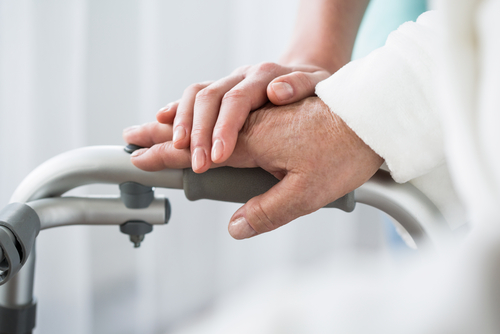



Get new exclusive access to healthcare business reports & breaking news




A team of Chicago researchers found major discrepancies in standards of care between private and nonprofit nursing homes. Their report, recently published in the journal Gerontology, shows that private doesn’t necessarily mean better when it comes to senior care services.
Elders living in private facilities are almost twice as likely to develop health problems as a result of staff neglect compared with residents of nonprofit facilities.
The team of scientists were led by Lee Friedman, associate professor at the University of Illinois at Chicago School of Public Health.
Their discoveries could turn the nursing home system on its head.
Community-dwelling adults aged 60 and beyond who need help with day-to-day chores but don’t belong to a nursing home, displayed the fewest signs of neglect compared with those living in any type of nursing facility.
Friedman said he observed some disturbing signs of neglect private nursing homes.
“Severe dehydration in clients with feeding tubes which should have been managed, clients with stage 3 and 4 bed sores, broken catheters and feeding tubes, and clients whose medication for chronic conditions was not being managed properly,” Friedman said.
This study is not the first to prove that signs of neglect are more prevalent among residents of for-profit nursing homes compared with nonprofit facilities.
However, unlike Friedman’s investigation, previous research have focused on issues such as bed sores or injuries, and they weren’t as comprehensive, either.
To get a better grasp of this issue, Friedman and his team analyzed the medical records of 1,149 patients aged 60 and older from five Chicago area hospitals. Patients participating in the study visited these hospitals between 2007 and 2011 for a variety of issues that could be linked to poor quality care.
Elders were divided in three categories: community-dwelling residents who live in private homes, but are accompanied by a family member or a friend, nonprofit facility residents, and people living in private nursing homes.
In order to quantify health problems related to substandard care, Friedman developed the Clinical Signs of Neglect Scale (CSNS). Substandard care, Friedman explained, is a form of neglect and falls within the definition of elder abuse. The CSNS scale encompasses most of the conditions associated with neglect from minor issues like constipation and dehydration to more serious problems such as severe bed sores and broken catheter tubes.
The results were astonishing. “A third of nursing homes in Illinois receive below-average ratings by the Centers for Medicare & Medicaid Services,” Friedman said. Private facilities in particular fall short when it comes to staffing and capacity.
While administrators are highly paid, other nursing home staff earn less than those working at nonprofit places. “So staff at for-profit facilities are underpaid and need to take care of more residents, which leads to low morale for staff, and it’s the residents who suffer,” Friedman said.
This new report adds to the growing evidence that country’s shortage of nurses and caregivers is weighing down the entire healthcare system.
New federal data supports Friedman’s study.
For years, nursing homes have been ‘beefing up’ the numbers of staffers in reports sent to the government in order to get a higher rating on Medicare’s Nursing Home Compare website and attract more clients. In reality, elders are often left unattended, especially during the weekends, the worst staffed days at nursing homes.
A Bradley University analysis showed the nursing shortage impact on patient care from medication errors to overcrowded emergency rooms and higher patient mortality.
The Centers for Medicare & Medicaid Services, the federal agency that oversees nursing home inspections, said it is working on making the nursing home ratings more accurate.
That might not be enough to make a visible shift in the quality of care.
Currently, there are nearly 1.4 million people cared for in nursing facilities in the United States. With more Baby Boomers reaching retirement age, it’s more urgent than ever to come up with a foolproof strategy to offer quality care for millions.
According to Friedman, this problem could be solved by having a better monitoring system of both private and private living facilities. “There needs to be better staffing and training for enforcing these measures. [..] Pressure from insurance providers to limit costly outcomes could help reduce the unfortunate diagnoses we saw in our study.”
Another overlooked solution? Technology. Automating day-to-day activities can ease the administrative burden of nurses. Tech innovations that can bring down the number of cases of neglect include telemedicine, webcams installed in patients’ rooms, devices for specific needs, such as high-tech silverware or drug delivery devices such as bioresorbable stents.